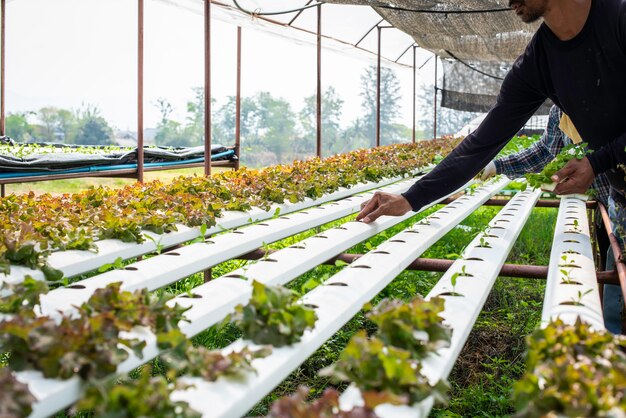Hydroponics, the practice of growing plants without soil, is revolutionizing agriculture around the world. For South African farmers, this method offers a sustainable and efficient solution to challenges like limited arable land, water scarcity, and unpredictable weather. If you’re considering hydroponics, here’s a step-by-step guide to help you get started.
1. Understand Hydroponics
Hydroponics is a method of growing plants using nutrient-rich water instead of soil. The roots are supported by an inert medium like coconut coir, perlite, or rock wool. This system provides plants with precisely what they need to grow, resulting in faster growth rates and higher yields.
2. Decide What to Grow
Hydroponics is ideal for high-value crops that thrive in controlled environments, such as:
- Leafy greens: Lettuce, spinach, and kale.
- Herbs: Basil, mint, and parsley.
- Vegetables: Tomatoes, cucumbers, and peppers.
- Strawberries and other small fruits.
Choose crops with high demand in your local market or those that can be sold at premium prices.
3. Select a Hydroponic System
Several hydroponic systems cater to different needs and budgets:
- Nutrient Film Technique (NFT): Nutrient-rich water flows in a thin layer over the plant roots. Ideal for leafy greens and herbs.
- Deep Water Culture (DWC): Plants float on a nutrient solution with roots submerged. Suitable for leafy crops.
- Drip System: Nutrients are delivered to plants via drip lines. Good for large vegetables like tomatoes.
- Ebb and Flow (Flood and Drain): Water floods the plant roots and then drains away, providing oxygen.
- Aeroponics: Roots are suspended in air and misted with nutrients. High-tech and water-efficient.
Choose a system based on your budget, crop type, and available space.
4. Set Up the Hydroponic Structure
- Space: Start small with a greenhouse, shed, or even an indoor setup. Expand as you gain experience.
- Lighting: Use natural sunlight for outdoor systems or install LED grow lights for indoor operations.
- Support Structure: Build racks or shelves to hold plants, nutrient reservoirs, and irrigation systems.
- Ventilation: Ensure good airflow to prevent mold and promote healthy growth.
5. Mix the Nutrient Solution
Hydroponics requires precise nutrient management. Purchase commercial hydroponic nutrients that contain:
- Macronutrients: Nitrogen (N), Phosphorus (P), and Potassium (K).
- Micronutrients: Iron, magnesium, calcium, and more.
Follow the manufacturer’s instructions to mix nutrients in the right proportions. Monitor and adjust pH levels (5.5–6.5 is optimal for most crops).
6. Source Quality Water
Water quality is critical in hydroponics.
- Use filtered water to avoid contaminants that could harm plants.
- Monitor water temperature (18–24°C is ideal).
- Regularly check and maintain nutrient solution levels.
7. Manage Planting and Growth
- Start with seedlings grown in plugs or directly in the hydroponic system.
- Space plants appropriately to avoid overcrowding and ensure proper airflow.
- Monitor growth daily for signs of pests, disease, or nutrient deficiencies.
8. Embrace Technology
Invest in tools to automate and optimize your system:
- Timers: Automate watering and lighting schedules.
- Sensors: Track temperature, humidity, and nutrient levels.
- Farm Management Software: Monitor data and improve efficiency.
9. Maintain Your System
- Regularly clean all components to prevent algae buildup and blockages.
- Inspect pumps, pipes, and reservoirs for leaks or damage.
- Replace nutrient solutions as needed to avoid imbalances.
10. Start Small and Scale Up
Hydroponics can be overwhelming for beginners. Begin with a small pilot project to learn the basics and refine your process. Once confident, expand your operation to include more crops or larger systems.
Benefits of Hydroponics for South African Farmers
- Water Efficiency: Uses up to 90% less water than traditional farming.
- Space-Saving: Ideal for urban farming or areas with limited land.
- Faster Growth: Plants grow 30–50% faster in a controlled environment.
- Year-Round Production: Grow crops regardless of the season.
- Reduced Pesticide Use: Controlled environments minimize pest problems.
Challenges and How to Overcome Them
- Initial Costs: Start with a basic system and upgrade over time.
- Learning Curve: Invest in training or consult experts to get started.
- Power Dependency: Use solar power as a backup in areas with unreliable electricity.
Hydroponics offers South African farmers a sustainable and profitable way to grow crops, even in challenging conditions. By starting small, mastering the fundamentals, and gradually expanding, you can unlock the full potential of this innovative farming method. With the right approach, hydroponics can be a game-changer for your farm.
Join 'Farmers Mag' WhatsApp Channel
Get the latest Farming news and tips delivered straight to your WhatsApp
CLICK HERE TO JOIN






